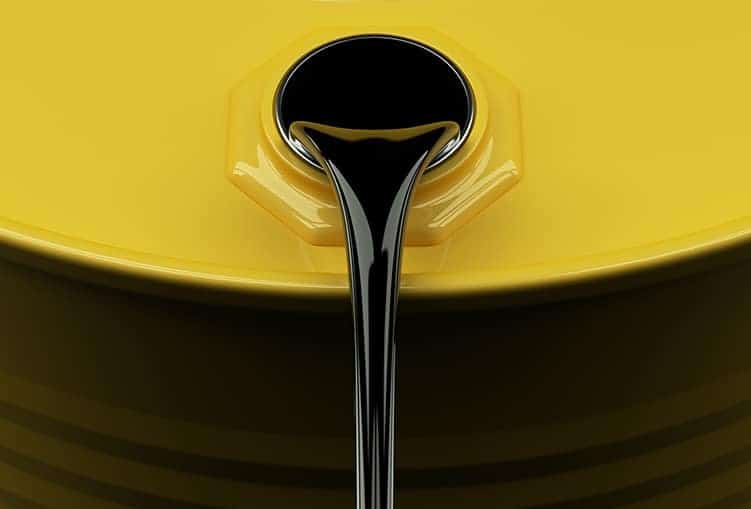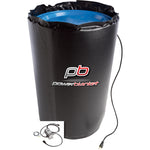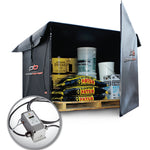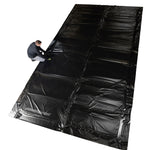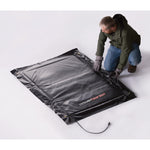You have no items in your shopping cart.
How Do You Measure the Viscosity of a Liquid?
At-a-Glance
How Do You Calculate Viscosity?
To calculate viscosity, use the formula Viscosity = (2 x (ball density – liquid density) x g x a^2) ÷ (9 x v), where g is the acceleration due to gravity (9.8 m/s²), a is the radius of the ball bearing, and v is the velocity of the ball bearing through the liquid, ensuring accurate measurements by considering factors like temperature and fluid concentration.
Key Takeaways
- Understand the Formula: Viscosity is calculated using the formula Viscosity = (2 x (ball density – liquid density) x g x a^2) ÷ (9 x v), where g is the acceleration due to gravity, a is the radius of the ball bearing, and v is the velocity of the ball bearing through the liquid.
- Measure Key Variables: Accurately measure the mass and radius of the ball, as well as the mass and volume of the liquid, to determine their densities. These measurements are crucial for applying the viscosity formula correctly.
- Calculate Velocity: Determine the velocity of the ball bearing as it moves through the liquid by measuring the time it takes to travel a known distance. This step is essential for completing the viscosity calculation.
- Consider Influencing Factors: Be aware that temperature, concentration, and surface tension can affect viscosity. Ensure measurements are taken under consistent conditions to maintain accuracy.
- Utilize Appropriate Instruments: Depending on the fluid and required precision, use tools like falling ball viscometers, capillary viscometers, or rotary viscometers to measure viscosity effectively.
Viscosity is an essential measurement used in every industry. Calculating viscosity of a given material must be accurate, as incorrect measurements can lead to costly accidents or ruined product. Read on to learn how to correctly use the formula for viscosity in heating applications.
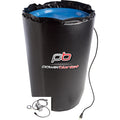
$1,133.99 USD
55 Gallon Drum Heater 145°F Adjustable Thermostat (120V)
For optimal viscosity control in your heating applications, consider using Heat Authority's drum & barrel heaters. These heaters help maintain consistent temperatures for accurate viscosity measurements.
What is viscosity, and why is it important to measure in process heating applications?
Viscosity, measured in Centipoise (CPS), is a measure of a fluid's resistance to flow. In heating applications, it is important to measure viscosity so that the fluid can be heated to the correct temperature. If the fluid is not heated to the correct temperature, it can cause problems in the system. For example, controlling the temperature of coconut oil is best managed by knowing the oil’s viscosity level. The thickness of the oil determines how likely it will burn at certain temperatures, since coconut oil can burn if brought to high temperatures too quickly.

What factors can affect the viscosity of a fluid or liquid substance?
Some factors that can affect the viscosity of a fluid or liquid substance are temperature, concentration, and surface tension. If you want to measure the viscosity of a fluid, take these factors into account:
- The viscosity of fluid will change depending on the temperature. Make sure you are measuring the viscosity at the same temperature that is being used in its process heating application. Heating barrels and drums that contain the fluid can help bring it to the same temperature level as your application.
- The concentration of a fluid can also affect its viscosity. A higher concentration of solids in a liquid will make it more viscous.
- Finally, surface tension can also affect the viscosity of a liquid. Higher surface tension will make the liquid more viscous. Note: heating the temperature of fluids is unlikely to impact the surface tension.
How can you determine viscosity using different instruments and methods?
As stated above, viscosity is the measure of a fluid's resistance to flow. An important physical property of fluids is the ability to measure viscosity is essential to its many applications, such as the design of pumps, turbines, and other fluid systems.
What is the formula for measuring viscosity?
There are several formulas and equations to calculate viscosity, the most common of which is Viscosity = (2 x (ball density – liquid density) x g x a^2) ÷ (9 x v), where g = acceleration due to gravity = 9.8 m/s^2, a = radius of ball bearing, and v = velocity of ball bearing through liquid.
Calculating the density of the ball
- Measure the mass of your ball, using a balance. For instance, suppose the mass of the ball is 0.1 kilograms (kg).
- Find the radius of the ball by first measuring the diameter (distance of a straight line through the ball at the widest part). Divide the diameter by 2; this gives the radius of your ball.
- Calculate the volume of the ball by plugging the radius into the equation for the volume of a sphere. Suppose the ball bearing has a radius of 0.01 meter (m). The volume would be: Volume = 4/3 x pi x (0.01 m) ^3 = 0.00000419 m^3
- Calculate the density of the ball by dividing its mass by its volume. The density of the ball in the example would be: Density = 0.1 kg ÷ 0.00000419 m^3 = 23,866 kg/m^3
Calculating the density of the liquid
- Measure the mass of your graduated cylinder when it is empty. Then measure the mass of your graduated cylinder with 100 milliliters (mL) of liquid in it. Suppose the empty cylinder had a mass of 0.2 kg, and with fluid its mass was 0.45 kg.
- Determine the mass of the fluid by subtracting the mass of the empty cylinder from the mass of the cylinder with the fluid. In the example: Mass of liquid = 0.45 kg – 0.2 kg = 0.25 kg
- Determine the density of the fluid by dividing its mass by its volume. Example: Density of fluid = 0.25 kg ÷ 100 mL = 0.0025 kg/mL = 0.0025 kg/cm^3 = 2,500 kg/m^3*
- 1 mL is equal to 1 cm^3 *1 million cubic centimeters equal 1 cubic meter
Calculate the viscosity of the liquid
- Fill your tall graduated cylinder with the liquid to be tested so it is about 2 cm from the top of the cylinder. Use your marker to make a mark 2 cm below the surface of the liquid. Mark another line 2 cm from the bottom of the cylinder.
- Measure the distance between the two marks on the graduated cylinder. Suppose that the distance is 0.3 m.
- Let the ball go on the surface of the liquid and use your stopwatch to time how long it takes for the ball to fall from the first mark to the second mark. Suppose it took the ball 6 seconds to fall the distance.
- Calculate the velocity of the falling ball by dividing the distance it fell by the time it took. In the example: Velocity = 0.3 m ÷ 6 s = 0.05 m/s
Calculate viscosity of liquid from the data you have collected
- Viscosity = (2 x (ball density – liquid density) x g x a^2) ÷ (9 x v), where g = acceleration due to gravity = 9.8 m/s^2, a = radius of ball bearing, and v = velocity of ball bearing through liquid.
- Plug your measurements into the equation to calculate the viscosity of the liquid. For example, the calculation would look like this: Viscosity = (2 x (23,866 – 2,500) x 9.8 x 0.01^2) ÷ (9 x 0.05) = 93.1 pascal seconds.
How is viscosity measured in units?
Here are some other common tools for measuring viscosity:
- A falling ball viscometer measures the time it takes for a ball to fall through a fluid. The time it takes for the ball to fall is inversely proportional to the viscosity of the fluid.
- A capillary viscometer is a device that uses laminar flow to measure the viscosity of a fluid. The device consists of a long, narrow tube with a known diameter. The fluid is forced to flow through the tube, and the time it takes to flow a certain distance is measured. The viscosity can then be calculated using Poiseuille's law.
- Rotary viscometers measure the torque required to rotate a spindle immersed in a fluid at a constant speed. The torque is proportional to the viscosity of the fluid.
- An oscillating disk viscometer measures the damping of an oscillating disk in contact with a fluid. The damping is proportional to the viscosity of the fluid.
- Viscometer with a viscometer cup: This type of viscometer is used for low-viscosity liquids. It is composed of a cup with a small hole at the bottom. The time it takes for the liquid to flow through the hole is measured, and the viscosity of the liquid is calculated using the formula of the specific viscometer.
- A rheometer is a device that measures the deformation and flow of a fluid under different conditions as they relate to the fluid’s viscosity, such as shear rate, temperature, and pressure.
- Vibrational viscometers use a vibrating element (e.g., a tuning fork) that is placed in contact with a fluid. The frequency of the vibration is related to the viscosity of the fluid.
Each of these viscosity-measuring methods has its advantages and disadvantages. The choice of which one to use depends on factors such as the type of fluid, the viscosity range, the temperature of the fluid, and the accuracy of measurement required.
How can you optimize your process heating system to ensure accurate measurements of viscosity?
Optimizing your process heating system to ensure accurate measurements of viscosity requires attention to several factors. For example, viscosity is temperature-dependent, so it's important to keep the temperature of the fluid being measured as stable as possible. This can be achieved by using a well-insulated heating system with precise temperature control, like drum and barrel heaters.

Caption: Bucket heaters, drum heaters, and barrel heaters are all useful tools in preventing liquids from thickening due to cold temperatures.
Another consideration is the type of fluid being measured, which should be representative of the actual process fluid. If possible, use the same fluid that is being processed in the system. If this isn’t possible, choose a fluid with similar properties to the process fluid.
It’s also critical to reduce any disturbances to the fluid being measured, as it can affect the accuracy of the viscosity measurement. This includes vibrations, turbulence, and flow rate fluctuations. Minimize these disturbances as much as possible.
Yet even with these considerations, not every fluid is automatically ready for measurement. Some fluids can be difficult to measure accurately due to their low viscosity or high sensitivity to temperature. In these cases, additives such as thickeners or stabilizers can be added to improve the accuracy of the viscosity measurement. Consider using additives to improve measurement accuracy as needed.
Additionally, make sure your measurement equipment is calibrated regularly. Regular calibration of your viscosity measurement equipment is essential to ensure accuracy. Calibration should be done against a standard fluid with a known viscosity. Following these steps can improve your process heating system to get the most accurate measurements of viscosity.



